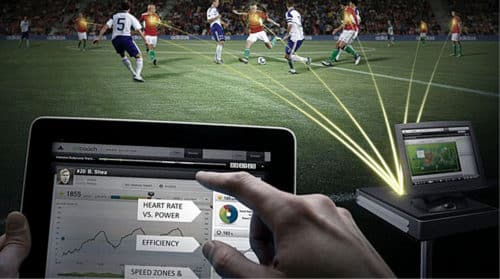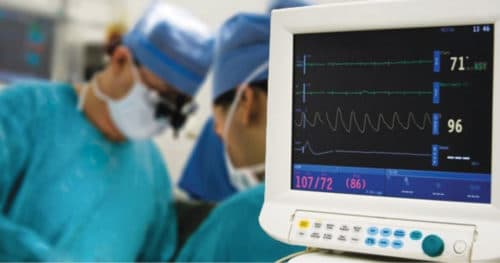Monitoring of human and animal behaviour, activities or other changing information for the purpose of influence, management, direction or protection has been in practice since long. This includes observation from a distance by means of electronic equipment or interception of electronically transmitted information.
However, what makes the present situation unique is the sheer scale of monitoring; the extent to which the overseer is unobtrusive and capabilities of the modern technology for storage, analysis and reporting of the gathered information.
Electronic monitoring provides structure, control and accountability of people. It can also provide an extra layer of supervision with the goal of enhancing public safety in the community. Electronic tagging, on the other hand, is a form of surveillance that uses an electronic device fitted to the person or animal.
In the last few decades, the scope of electronic monitoring has widened greatly in terms of devices and applications. It can now be used for employees at workplace, crime control, drug de-addiction, animals (on land, in air and in water), vegetation, environmental and climate change, social amenities (health, banking, traffic, sports, air quality, etc), adventurers and work seekers in remote and risky areas, etc. Electronic devices such as CCTV cameras, biometric registers, sensors, radio-frequency (RF) and global positioning system (GPS) bracelets, phones and e-mails are becoming integral tools of monitoring everywhere to improve efficiency.
Electronic monitoring devices
The technology behind electronic monitoring devices continues to evolve. While once these just used radio signals to detect whether someone was home, now many devices use GPS and cell tower signals to give precise locations. Monitors can detect blood-alcohol levels through a person’s sweat. However, the system has flaws. Devices can send false alerts. Sometimes, these send so many alerts that officers can’t carefully look into all of them.
Researchers believe electronic monitoring can even predict whether someone is about to commit a crime. At the workplace, electronic monitoring runs from keystroke counting; telephone service observation whereby statistics are gathered on the duration, time between and number of calls; telephone call accounting; peeking on to workers’ computer screens and into electronic mail; and the use of active or magic badges that can keep track of an employee’s movements and locations. Increasingly, computers are being used to set tasks and performances for all levels of workers. Employers may view employees on closed-circuit TV; tap their phones, e-mail and network communications; and rummage through their computer files with or without employees’ knowledge or consent-24 hours a day.
Electronic identification and monitoring are important tools within the management of animal husbandry systems. Rumination activity is an indicator of animals’ health status and production. Remote monitoring of animal behaviour in the environment can assist in managing both the animal and its environmental impact. GPS collars that record animal locations with high temporal frequency allow researchers to monitor both animal behaviour and interactions with the environment.
Tracking migrations is an important tool to better understand and protect species. Scientists today still attach tags, such as metal bands, to track animal movements. Metal bands require re-capture of animals for the scientists to gather data; data is thus limited to the animal’s release and destination points.
Recent technologies have solved this problem. Electronic tags give scientists a complete, accurate picture of migration patterns. Some electronic tags give off repeating signals that are picked up by radio devices or satellites, while other electronic tags could include archival tags (or data loggers). Using RFID technology or satellites, scientists can track the location and movement of tagged animals without recapturing them. These electronic tags can provide a great deal of data.
Telemetry, in general, involves the use of a transmitter that is attached to an animal and sends out a signal in the form of radio waves, just as a radio station does. Scientists may place the transmitter around an animal’s ankle, neck, wing, carapace or dorsal fin. Alternatively, they may surgically implant it as internal radio transmitters, which have the advantage of remaining intact and functioning longer than traditional attachments, with protection from environmental variables and wear.
Geolocators or geologgers technology utilises a light sensor that tracks light-level data at regular intervals in order to determine a location based on the length of the day and the time of solar noon. Receivers can be placed in Earth-orbiting satellites, and networks (or groups) of satellites used to track animals. Each satellite in a network picks up electronic signals from a transmitter on an animal. Together, signals from all satellites determine the precise location of the animal. Satellites also track the animal’s path as it moves. Satellite transmitters fitted to animals can also provide information about their physiological characteristics (temperature) and habitat use. Satellite tracking is useful especially because scientists do not have to follow the animal or recover its tag to get data on its whereabouts.
Satellite networks track the migration and territorial movements of caribou, sea turtles, whales, great white sharks, seals, elephants, bald eagles, ospreys and vultures. Additionally, pop-up satellite archival tags are used on marine mammals and various species of fish. Thanks to these systems, conservationists can find the key sites for migratory species.
Uses of electronic monitoring
In sports
Present electronic monitoring systems use new and improved apparatus and method to control a television system, which includes a replay recorder, to monitor events of interest during sports contests. When the indicator detects an event of interest during the contest being monitored, such as an intrusion or the presence of an object along a line or boundary, a signal is sent to the video replay recorder (also known as an instant replay system) to continue recording for a predetermined interval and then cease.

Electronic monitoring in sports
In sports contests, several types of indicators assist officials in monitoring events of interest, particularly those along lines or boundaries-such as determining whether a tennis ball lands in or out of play during a tennis match. One type of indicator is electronic-laser indicator. Other types of line indicators include those utilising pressure-sensitive tapes as the line or boundary and those based on the detection of magnetic particles in the ball.
In business
Video surveillance and business security systems are now used for everything from measuring efficiency to data security, and to compliance with securities laws. Businesses use video surveillance systems for a lot more than catching shoplifters or reducing the time employees spend goofing off. Employee monitoring is being used to increase customer satisfaction, improve employee performance and enhance productivity.
Employers justify monitoring of their employee activities as essential to protect the organisation from unwanted actions conducted over its network. The responsibility to secure the network outweighs employees’ expectations for privacy in the workplace. Balancing employee privacy and business needs is essential for developing an effective and defensible monitoring programme. While it is recognised that abuses may occur, these can be avoided by a participatory introduction of the new technology, allowing the workers some input into the design and implementation of the monitoring systems.
Medical and health use
At present, almost all the hospital activities are electronically monitored. Continuous electronic monitoring could save hospitals billions of rupees. Elderly people in care homes can be tagged with electronic monitors used to keep track of young offenders. Electronic monitoring can also be used to prevent dementia patients from wandering away. Use of electronic monitoring devices for inhalers is growing rapidly because of their ability to provide objective and detailed adherence data to support clinical decision making.

Electronic monitoring for medical and health
For animals
As mentioned earlier, GPS collars and electronic tags are being used to monitor animal behaviour in an environment, and track and study migration patterns, respectively.
For criminals
Electronic tagging is commonly used for people who have been sentenced to electronic monitoring by a court, or are required to wear a tag upon release from prison. With overcrowded jails and the high cost of incarceration, many states have turned to electronic monitors as a cost-effective way to send people home and free up jail space.
Electronic tagging is also used in immigration contexts in some jurisdictions. If the device is based on GPS technology, it is usually attached to a person by a probation officer, law enforcement or a private monitoring services company field officer, and is capable of tracking the wearer’s location wherever the satellite signal is available.
Electronic monitoring tags can also be used in combination with curfews to confine defendants or offenders to their homes as a condition of bail, as a standalone order or as a form of early release from prison. The combination of electronic monitoring with a curfew usually relies on RFID technology, which differs from GPS technology.
While the role of electronic monitoring in community corrections and the overall criminal-justice system is still insignificant, the technology has improved (especially with regard to GPS) and become an increasingly used criminal-justice tool. Using tracking systems, criminal justice agencies can monitor an individual’s location and be alerted to any unauthorised movements. Thus these systems can be useful in detention, restriction and surveillance.
Potential benefits of electronic tagging are cost savings to the criminal justice system and more optimal use of prison space. However, constant surveillance of people, particularly through the use of devices affixed to their body or implanted beneath the skin, raises serious civil liberty and ethical concerns.
For job performance
Productivity issues and misuse of the Internet during office hours are the main reasons why employers resort to monitoring their staff’s online behaviour at work. Various studies conducted by psychological scientists have found that electronic monitoring is, in fact, associated with higher performance; not only that, the more frequently the workers were monitored, the better they performed.

Electronic monitoring for job performance
In an effort to enhance employee performance, organisations like call centres are increasingly using electronic technology to monitor their workers on the job. With electronic performance monitoring, supervisors can continually track and analyse an employee’s workflow in real time. They are able to review call recordings as well as listen into calls as they happen. Electronic monitoring systems are also used to continually collect information on performance metrics, such as average call handle time, total number of calls handled and time on breaks. Knowing that they could be evaluated at any time, employees would be motivated to do their best and work harder on all calls.
Through the use of electronic technology, companies are able to guarantee their customers about delivery of a quality product or service in time. These are also able to enhance employee safety and convenience, protect employer and employee property, improve accounting efficiency, provide perquisites and benefits to employees, and prevent fraud. In fact, electronic monitoring has become essential to remain competitive in the global economy.
Objections to monitoring
Electronic surveillance invades employees’ privacy, erodes their sense of dignity and discourages high-quality work by sole emphasis on speed and other purely quantitative measurements. Electronic monitoring puts pressure to perform. Stressful working conditions related to monitoring include heavy workload, repetitive tasks, social isolation and fear of job loss, which are exacerbated by the lack of job involvement or participation, and no organisational support. These sociotechnical triggers, besides generally adverse working conditions, can have direct psychological consequences.
The monitored employees reported higher workload, less workload variation and greater workload dissatisfaction than unmonitored employees. They also reported more musculoskeletal, psychological and psychosomatic health complaints.
Caution advised
Electronic monitoring is gaining widespread application in various fields owing to its many advantages. However, it also has a few disadvantages. Surveillance is a fundamental means by which employers inexpensively and effectively exercise power. But, stress, inter-worker competition and performance evaluations ultimately have a detrimental effect on productivity and smooth operation of businesses. So management is now concerned primarily with devising more efficient and less draconian means of implementing and administering monitoring systems. Similarly, electronic monitoring in case of animals also should not harm their behaviour, freedom and health.








